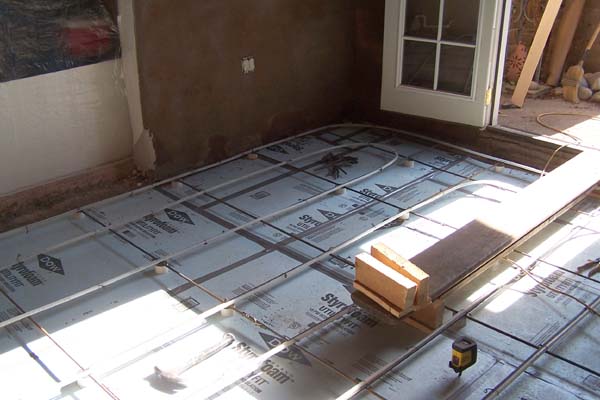This image shows us installing in-floor radiant heat tubing in this small living room area. We have completed the demo of the walls down to the original adobe walls in this small 600 square foot house in Dixon, New Mexico. This home was built some years ago, we think around the 1940’s and the current owner has been over time renovating each of the rooms, now and again with our help.
The brown earthen plaster coat shown on the walls in this photo are drying and the next step in the process of this room renovation is to add rigid foam insulation (shown) and to lay the radiant floor tubing. You’ll note the pattern of the tubing being laid in the floor, placed with spacing designed to maximize the amount of heat which will be placed into the floor by way of hot water running through the tubing.
Cement floors are known (like poured adobe floors) have thermal mass and the heat created in the floor will conduct evenly in and through the entire floor. The effect is an even warm feel to the entire room. Also there is something about having warm feet which help keeps a body more warm during winter months. In-floor heating is one of our favorite methods of heating a home. We most often encourage home owners to use solar hot water panels to heat the floor, but it is not always possible and a hot water heater can also serve the purpose, as is the case in this project.
Following the in-floor tubing installation we will pour on top the custom cement floor and once that floor has dried and has cured enough, we will apply the custom gold plasters seen in other photos in this particular gallery. The floor will of course be poured in one, mono pour slab and once it has dried the required amount, the hard troweling will polish it and bring out the heavy brown pigments which create a lovely marbled effect.


